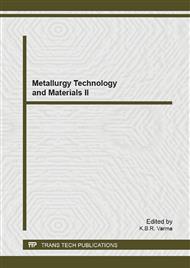p.175
p.179
p.188
p.192
p.196
p.201
p.205
p.210
p.217
Philosophy and Application on Circulating Economy for Contemporary Steel Plant
Abstract:
Steel is an important and indispensable foundational material of human social development. Modern iron and steel production is not only a single function of steel product manufacture, also must have two functions of highly efficient energy conversion and disposal the waste and realize the function of resource recovery. Under the condition of shortage of the current resources, inadequate energy supply, and the ecological environment constraint, the modern steel plant have to build a circulating economy development mode, to achieve reduction, recycling and reusing. Combining with the Shougang Jingtang steel plant design and construction, the application and effect of development of circulating economy in modern steel plant has been expatiated in this paper.
Info:
Periodical:
Pages:
196-200
Citation:
Online since:
September 2013
Authors:
Price:
Сopyright:
© 2013 Trans Tech Publications Ltd. All Rights Reserved
Share:
Citation:


